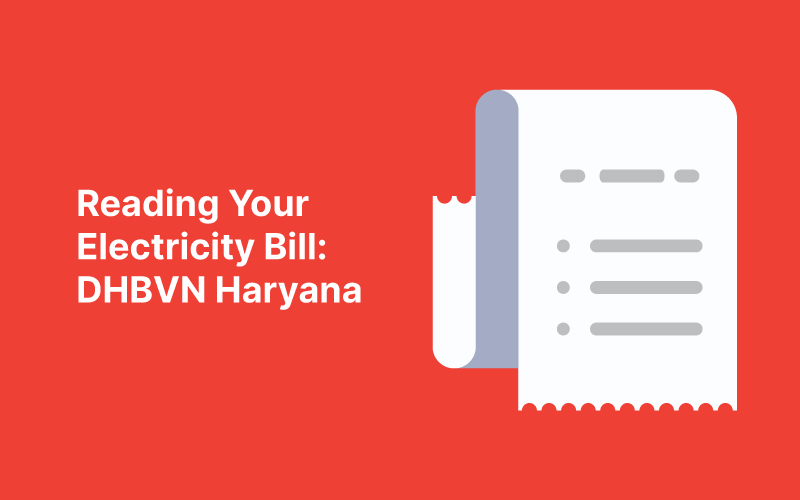Are you one of those to whom any text written on an electricity bill appears gibberish?
If you are, you are not alone.
Many of us have been paying our electricity bills for many years, yet we, either never bother to read and understand our bill or find it challenging to really comprehend our electricity bills from the power distribution companies. With too much information, complex structure and numerous electrical jargons on an electricity bill, reading it, is indeed quite difficult.
But why do we really need to read your electricity bill?
We can just pay off the bill amount? Why bother reading the whole bill?
Well, electricity bills have become the talk of the town as many of the countrymen across different states in the country have been handed over exorbitant electricity bills after the lockdown. People are in shock and finding it hard to understand their electricity bill.
Continuing our blog series with today’s post on reading the electricity bill of DHBVN, Haryana. Let us see and understand reading the bill of DHBVN in Haryana.
Dakshin Haryana Bijli Vitran Nigam
Dakshin Haryana Bijli Vitran Nigam, also known as DHBVN, is an Indian state-owned Power Distribution Utility company. It is owned by Government of Haryana and its headquarter is located in Hisar city of Haryana, India. It has two Operation Zones namely Hisar and Haryana. Each zone is headed by Chief Engineer. Both Zones have Operation circles namely Hisar, Sirsa, Fatehabad, Jind and Bhiwani in Hisar Zone and Gurugram-I, Gurgugram-II, Faridabad, Palwal, Rewari and Narnaul in Haryana Zone.
Different Sections of DHBVN Bill
Every electricity bill gives out information on your connection, your reading, your due bill amount and your last bill payment.
Personal & Connection Details, Amount Payable and Meter Reading Details
DHBVN bill starts with the section having your personal details on the left This section contains information about your connection such as; name, billing address, contact details, circle, division, sub-division, cycle group. At the middle, your account details are given and bill number. On the right, the net payable amount is mentioned with a due date. It also has a section for surcharges which is added to get the gross payable amount.
At the bottom of this section, meter and reading details are mentioned. It gives out information such as meter reading dates, meter readings, billing period, consumed units and other information viz billed units, bill basis, reading remark and meter status.
Billing Details
This section makes the bill transparent by giving out detail about the billing of the current month. Apart from fixed charges, this section has slab wise readings with unit and amount, surcharge, electricity tax, sanctioned load and the total payable charge, all these are mentioned in detail. Once you know all the details, you can yourself calculate and verify your electricity bill. Additionally, any rebate or concession given on your bill is also mentioned here.
Billing Cycle and Last Payment Details
The next section tells you about the payment details such as total bill payable amount and due payment date. If the bill is paid after the due payment date, late payment surcharge is added to the next month’s bill. People usually do not pay much attention to this important selection of the bill and end up paying more as they keep on delaying paying their bill payment.
Details of charges for running cycle are also listed. In fact, the details of the last payment made are also mentioned. You can see your consumption pattern of previous cycles on the right side of this section
Additional Details for Consumer
Customer support details Information on the bill payment is given in this section
Besides, the bill also has a customer support number. Consumers from Haryana can use the number given on the top of the bill to ask any query or register their complaints.
Do give our blog a read for all your solar-related questions. You can also check out other interesting updates on solar on our Facebook page (facebook.com/zunroof)
Reach out to us by filling the form below:

